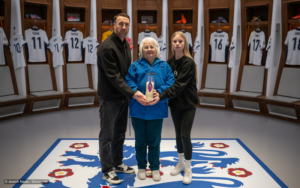Bridging

Bridging from person to person – this can include the transmission of memory, such as finding ways to share stories of the Holocaust and of recent genocides that resonate with people today – through testimonies, yes, and also through education, art, literature, film and digital media. It can include intergenerational dialogue: a grandparent sharing memories, a student interviewing a survivor or young people engaging with the children and grandchildren of survivors, these moments create space for understanding.
Bridging from ‘silent witnesses’ – historical artefacts are the ‘silent witnesses’ providing evidence of the past to generations today. These are literally ‘articles of fact’ – photographs, letters, diaries, documents and personal items that belonged to people who were persecuted, murdered or who survived – and which will continue to exist long after individuals have passed on. Learning about these artefacts, where they came from and how they arrived in the UK can tell us so much about the history of the Holocaust or of more recent genocides. Some are in museums around the UK and the world, others are included in our resources – you can find out how artefacts can help us bridge generations via our website.
Bridging from the historical record – digitised archives can help provide a bridge from the records of the past held in archives, museums or family collections.
Bridging Generations, will encourage a shared responsibility, recognising that remembrance is a shared task – one that requires every generation to step forward. Together at HMD, we’ll build empathy and understanding, using the lessons of the Holocaust and of recent genocides to sharpen our awareness and deepen our compassion in the face of contemporary injustice.